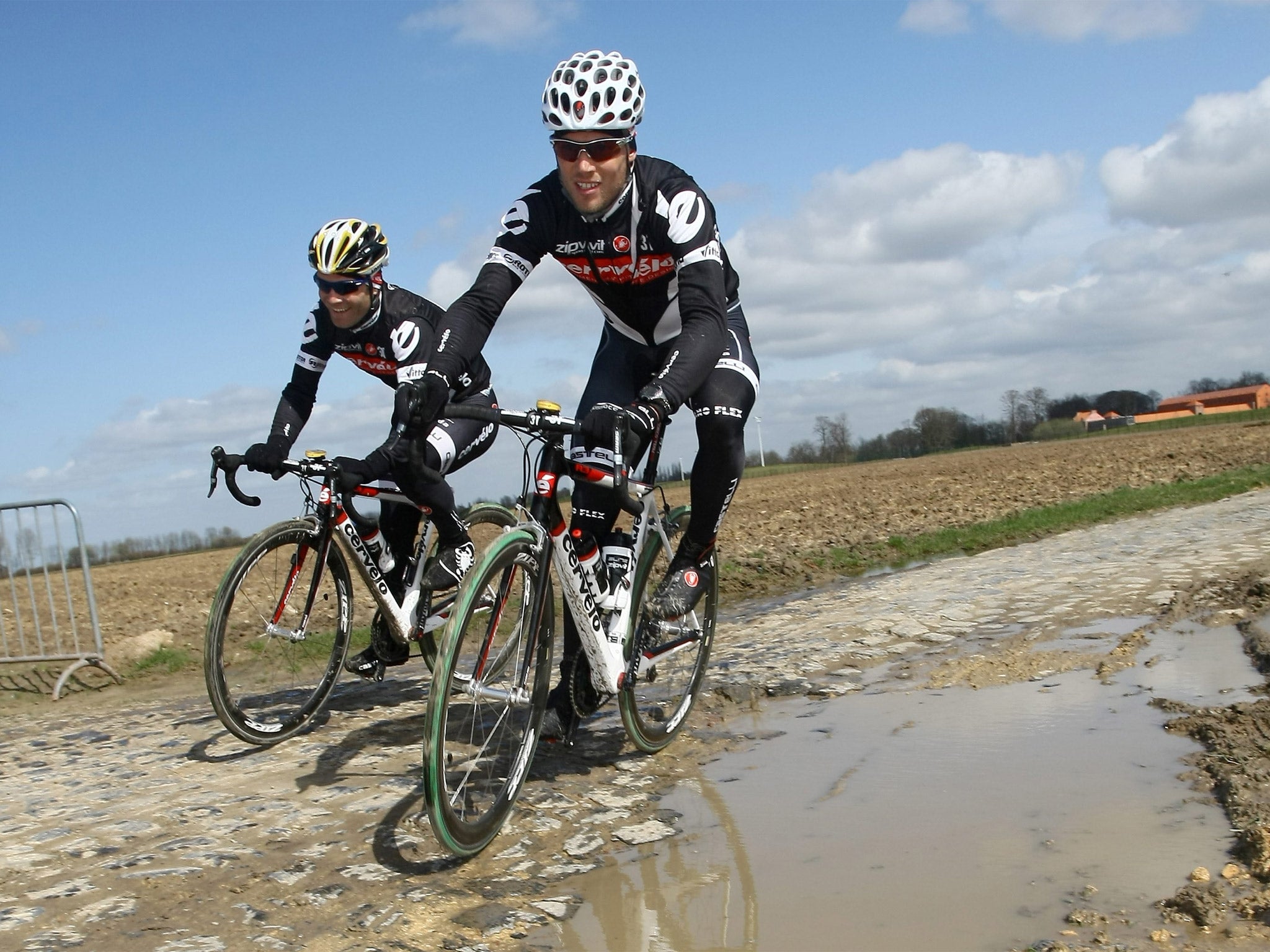Tour de France 2014: Road to ‘hell’ will cause mass panic in peloton
Sky’s decision to omit cobbles specialist Sir Bradley Wiggins may backfire

It is no exaggeration whatsoever to say that Wednesday’s stage is the one which the overall favourites fear the most in the entire Tour de France. In fact, it is arguably the stage which has created the biggest collective sense of impending doom in the Tour’s peloton in the last four years.
The reason for their mass panic is just 15.4 kilometres (9.6 miles) long – which under usual circumstances, and given that riders will tackle 3,000-plus kilometres between Leeds and Paris, would hardly be noticed. But that is the length of the rural cobbled back roads of northern France, in nine separate segments, which the Tour peloton will tackle – and on which, as has been proved on countless occasions, anything could happen.
The northern France pavé, as it is known, is so hard for bike racers to handle that it is usually reserved for a single event each year: Paris-Roubaix, graphically nicknamed “The Hell of The North”. Given the Tour’s last visit was in 2010, the organisers’ decision to feature nine separate segments of Paris-Roubaix pavé has caused much debate and not a little controversy.
Most of the Tour’s overall contenders make a point of avoiding Paris-Roubaix and any similar Belgian races, such as the Tour of Flanders or Ghent-Wevelgem, like the plague. But everybody knows in cycling that on these badly cobbled farm lanes, punctures, crashes and mechanical incidents are two a penny, and their Tour de France can be wrecked in an instant: as it was for Frank Schleck, who finished third in 2011, but the year before fell and broke his collarbone.
“It’s totally unpredictable,” Roger Hammond – Britain’s greatest Paris-Roubaix rider, most notably with a third place in 2004 – tells The Independent. “Sky like to keep things as much under control as they can,” Hammond, now a manager for the Madison-Genesis team, says “but tomorrow that’s going to be difficult.
“None of the [overall contenders] are specialists, so it is bound to do some damage. In Sky they’ve got two Roubaix specialists, Geraint Thomas and Bernie Eisel, on the team to guide Froome.
“But really, riding well on the cobbles is a question of self-confidence. There’s only so much your team helpers can do. That’s why it’s such an exciting stage. These riders know how to do mountain climbs and flat stages, but something like this – it’s about pulling them out of their comfort zone.”
Alberto Contador offers this laconic analysis of the stage: “There are four possibilities: either nothing happens, or you lose time, or your rivals lose time, or you go home in a crash. I’m not scared, but I have a lot of respect for the pavé.”
It is arguable, though, that Sky perhaps risk more than most. Sir Bradley Wiggins is the only top Tour contender versatile enough to be a contender in Paris-Roubaix, too, finishing ninth this spring. His already controversial absence could therefore become even more important should Froome – who has ridden Paris-Roubaix only once, when failing to finish in 2008 – falter on the cobbles.
All of the Tour contenders have done their reconnaissance of the cobbles to try to limit potential damage, Froome once, while Contador is so worried he has visited them twice, most recently last week. Yellow jersey Vincenzo Nibali has reportedly had his own personal tutor – former double Paris-Roubaix winner Peter van Petegem.
But as Hammond points out, reconnaissance in Paris-Roubaix can only get you so far – particularly if it rains, as forecast.
“If it does rain, conditions could be worse than [in Paris-Roubaix] in April. I rode 11 Roubaixs and all of them were in the dry. It’s almost worse now because you’ve got all that summer dust and rubbish and if it hasn’t rained for a while, that’s not cleared off.
“Either way, training days and racing days are very different. It’s very different in training when you can ride on a nice smooth grass verge and dodge the cobbles because there’s nobody there, and when you have to go over the cobbles in the middle of the track because the grass verge is full of spectators.
“For these guys, what’s worse is going to be the sense of not knowing what’s going to happen. It adds another dimension altogether to the Tour,” Hammond says.
Subscribe to Independent Premium to bookmark this article
Want to bookmark your favourite articles and stories to read or reference later? Start your Independent Premium subscription today.

Join our commenting forum
Join thought-provoking conversations, follow other Independent readers and see their replies